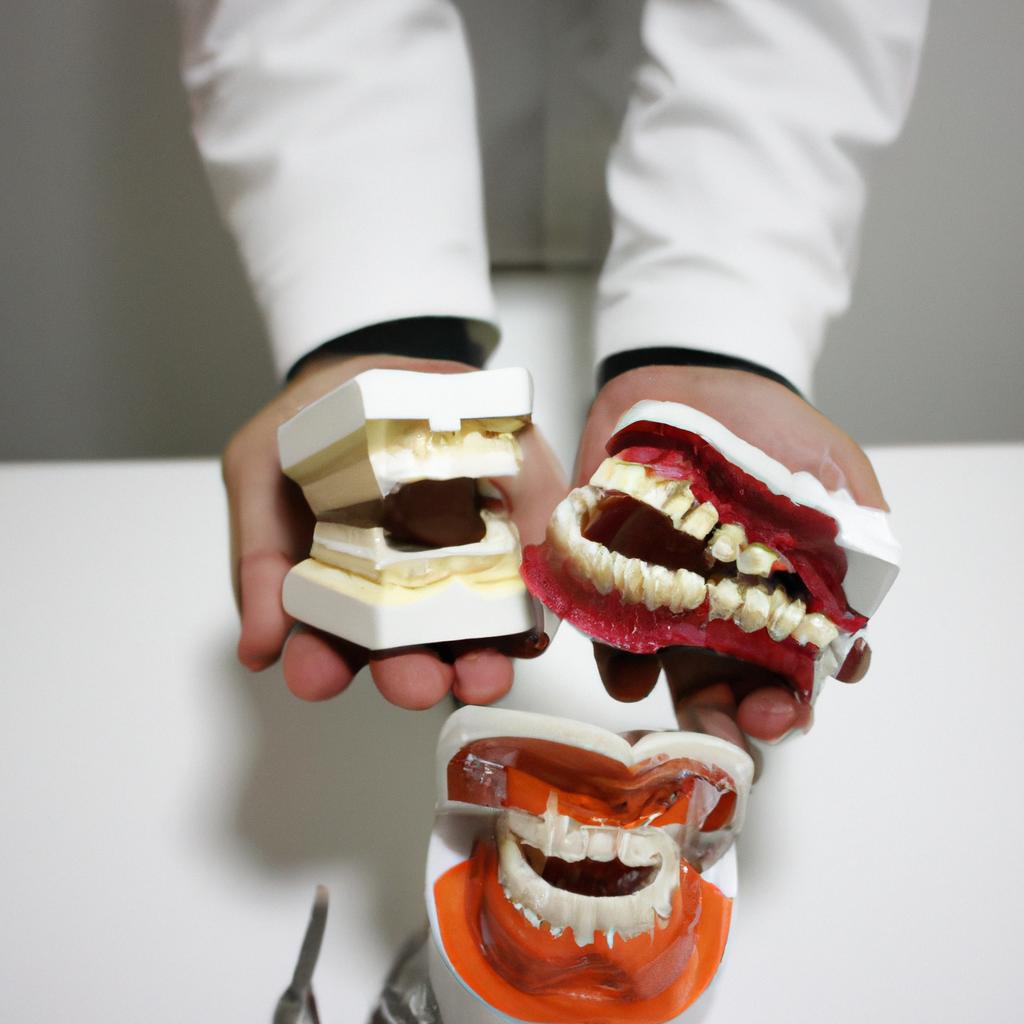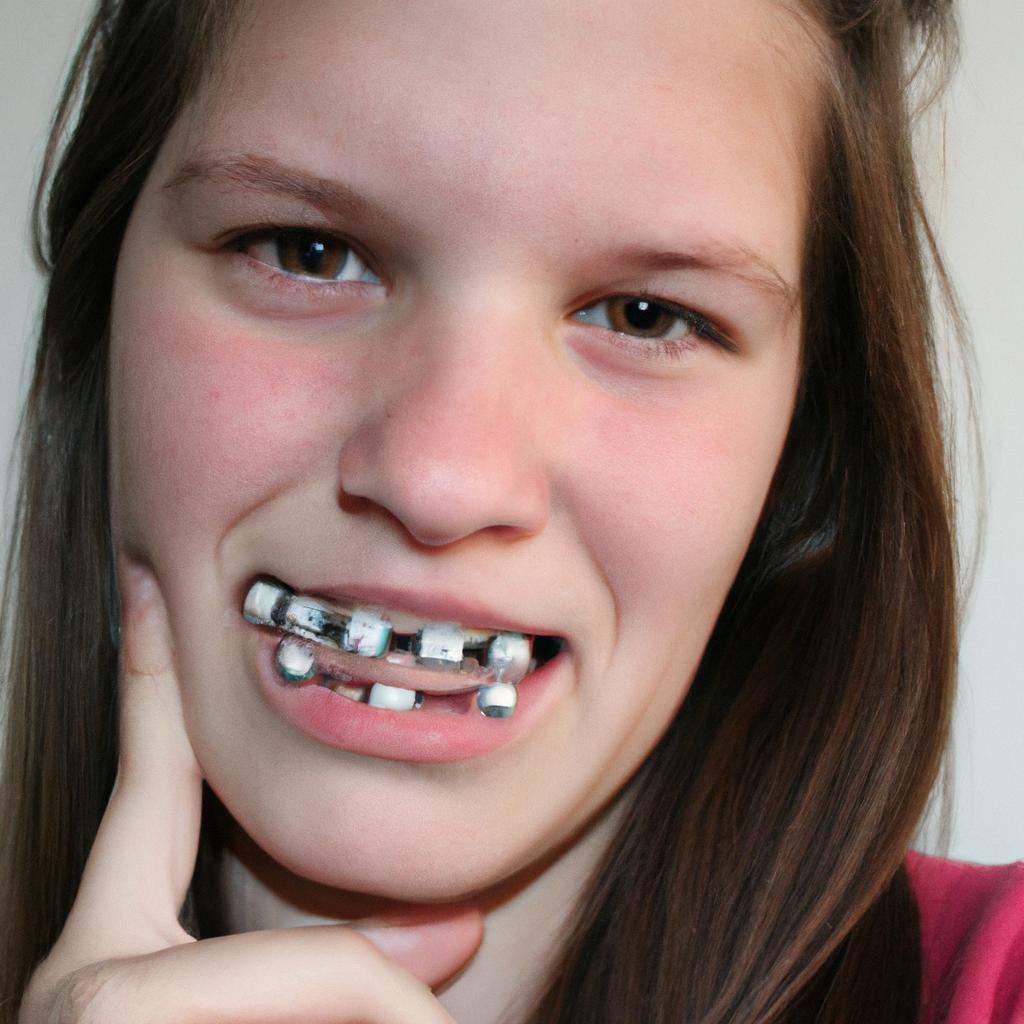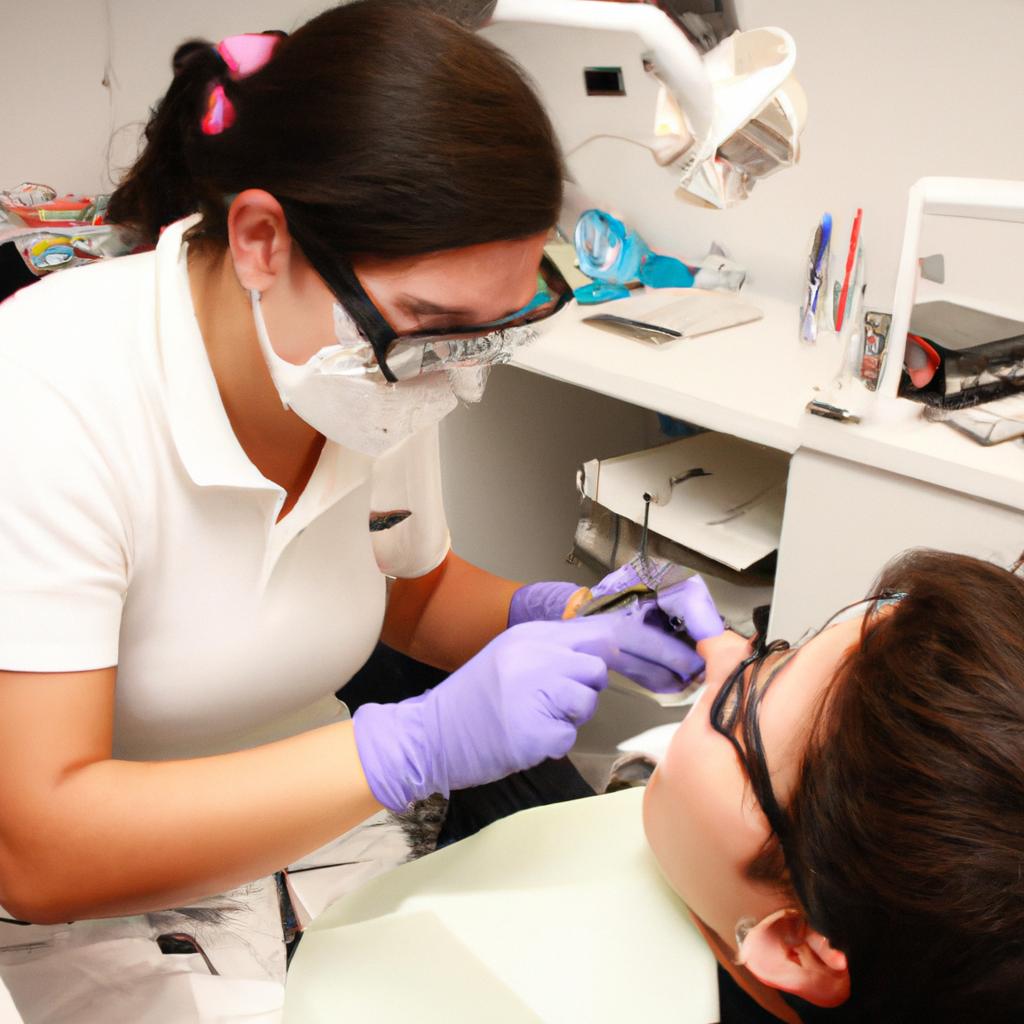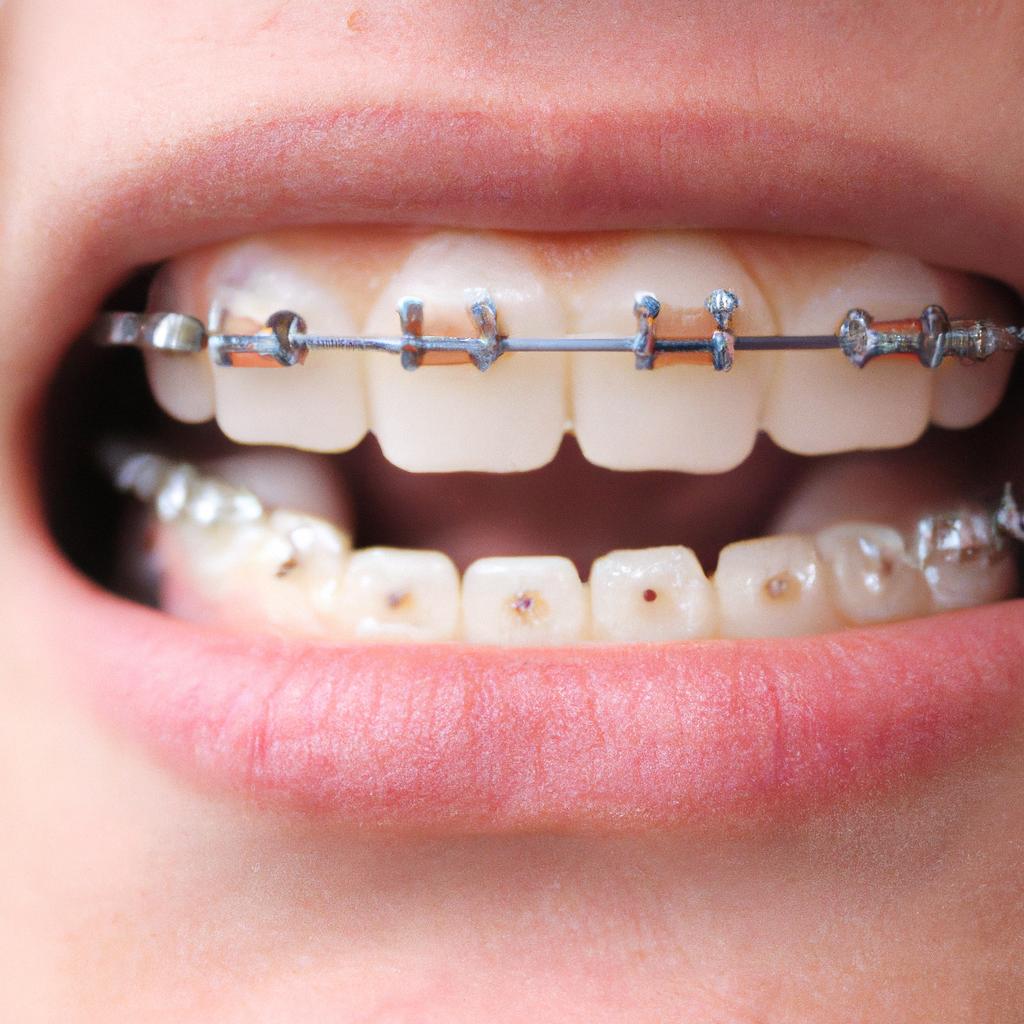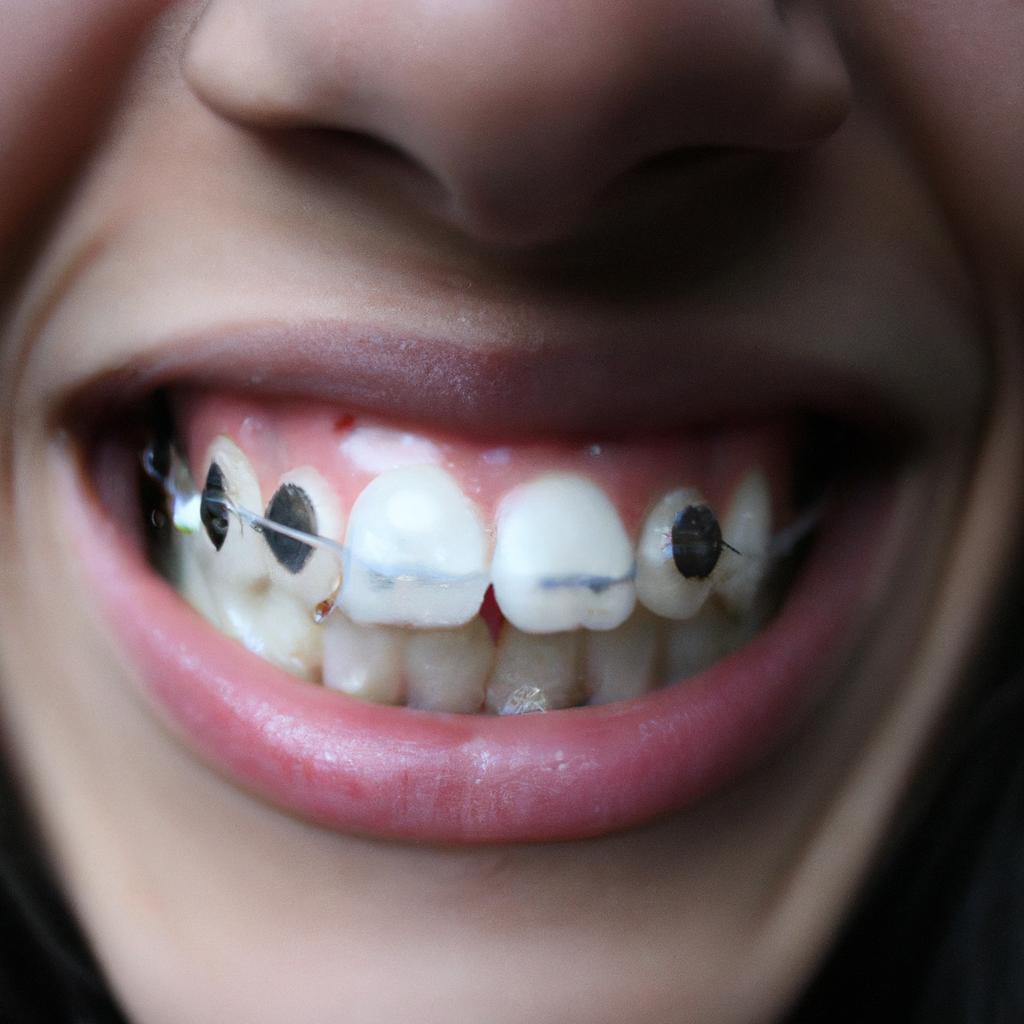Retainers in Orthodontics: A Comprehensive Guide
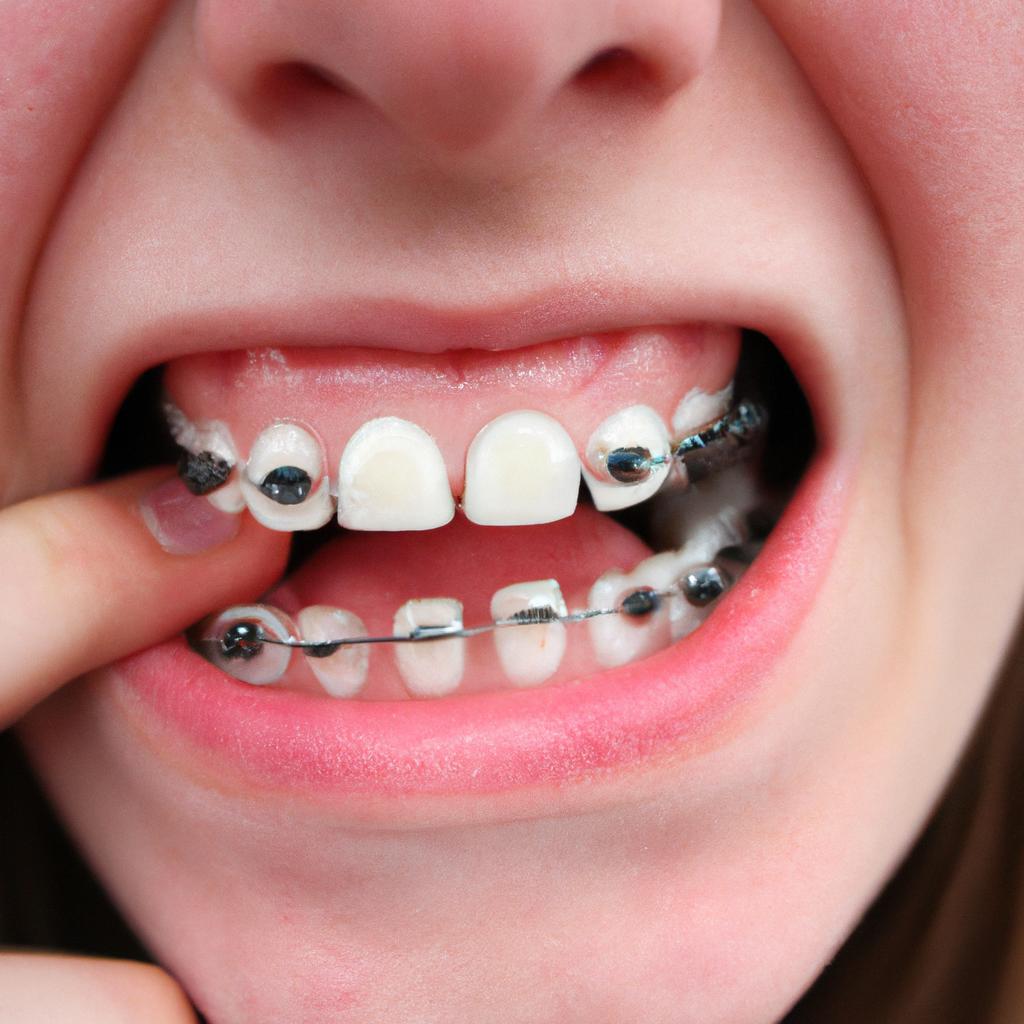
Retainers play a crucial role in orthodontic treatment, serving as an essential tool for maintaining the alignment and stability of teeth post-treatment. Whether it be correcting malocclusions or closing gaps between teeth, retainers have proven to be effective in preserving the results achieved through braces or aligner therapy. For instance, consider the case of a 16-year-old patient who underwent comprehensive orthodontic treatment involving fixed appliances to address overcrowding and misalignment. Following successful completion of treatment, the patient was fitted with a retainer to prevent relapse and ensure long-term retention of their newly aligned dentition.
This article aims to provide a comprehensive guide on retainers in orthodontics, covering various aspects such as types of retainers, their purpose and function, proper care and maintenance protocols, as well as common challenges associated with wearing them. By understanding the significance of retainers in orthodontic treatment and acquiring knowledge about their different forms, patients can make informed decisions regarding their oral health journey beyond active intervention. Furthermore, dental professionals will benefit from this guide by enhancing their clinical expertise in prescribing appropriate retainers based on individual patient needs and monitoring compliance during the retention phase.
What is a retainer?
What is a retainer?
Orthodontic treatment, aimed at correcting dental misalignments and improving oral function and aesthetics, often involves the use of retainers. A retainer is a custom-made device that orthodontists prescribe to patients following the completion of their braces or aligner treatment. It plays an integral role in maintaining the achieved tooth positions and preventing relapse.
To illustrate its importance, let’s consider the case of Sarah, a 16-year-old patient who recently completed her orthodontic treatment with traditional metal braces. After having her braces removed, Sarah was delighted with her new smile; however, she soon discovered that without proper retention, her teeth started shifting back towards their original positions. This setback served as a reminder of the crucial role retainers play in preserving orthodontic results.
Retainers primarily work by applying gentle pressure on teeth to keep them aligned while allowing surrounding tissues time to adapt to these new positions. They are typically made from durable materials such as clear plastic or thin wires attached to acrylic plates. The choice of retainer material depends on various factors including patient preference, aesthetic concerns, and specific clinical needs.
A comprehensive understanding of retainers requires consideration of their benefits:
- Prevents relapse: Retainers help maintain newly straightened teeth in place after completing orthodontic treatment.
- Enhances stability: By providing continuous support, retainers allow surrounding tissues like gums and bones to stabilize around the corrected tooth positions.
- Improves oral health: Properly fitted retainers make it easier for individuals to practice good oral hygiene habits such as brushing and flossing effectively.
- Boosts self-confidence: Wearing a retainer ensures long-term preservation of a beautiful smile attained through orthodontic intervention.
In summary, retainers serve as essential tools in post-treatment care for orthodontic patients. By wearing them consistently and following recommended guidelines provided by their orthodontist, individuals can maintain the outcomes of their treatment and preserve a healthy, confident smile. In the subsequent section, we will delve into different types of retainers to further explore their characteristics and potential variations in design.
Types of retainers
After understanding the purpose and importance of retainers in orthodontics, let us now delve into the different types available. Each type offers unique advantages and considerations that must be taken into account for effective post-treatment care.
One commonly used retainer is the Hawley retainer, which consists of a plastic base molded to fit the roof or floor of the mouth with a wire component that wraps around the front teeth. This type allows for adjustments over time as the orthodontic treatment progresses. For example, consider Sarah, who recently completed her braces treatment. She was provided with a Hawley retainer to maintain her newly aligned smile while also allowing minor corrections if needed.
Another popular option is the Essix retainer, made from clear plastic material resembling an aligner tray. It snugly fits over all teeth and provides excellent aesthetics due to its discreet appearance. Emma, another patient, received this type of retainer following her orthodontic treatment as it offered both comfort and inconspicuousness.
A third type worth mentioning is the fixed bonded retainer, consisting of a thin wire attached behind the front teeth using dental cement. Unlike removable retainers such as Hawley or Essix retainers, this one remains permanently affixed until professional removal becomes necessary. Patients like Jack find this option appealing because they don’t have to worry about misplacing their removable appliance during meals or activities.
When deciding on a suitable retainer type, it’s essential to consider factors such as lifestyle preferences, oral hygiene practices, and any specific recommendations from your orthodontist. To summarize:
- Hawley retainers offer adjustability but may be more noticeable.
- Essix retainers provide better aesthetics but can be less durable.
- Fixed bonded retainers eliminate concerns about compliance but require extra attention during cleaning.
Let’s move forward by exploring how these various types of retainers function and contribute to maintaining the outcome of orthodontic treatment. But first, let’s understand how they work.
Next section: How do retainers work?
How do retainers work?
Types of retainers play a crucial role in maintaining the alignment and stability of teeth after orthodontic treatment. As mentioned earlier, there are several types of retainers available to patients based on their specific needs. Let’s explore further how these different types work.
One common type of retainer is the Hawley retainer, which consists of an acrylic plate that sits on the roof of the mouth or behind the lower front teeth. It is held in place by a wire that wraps around the front teeth. This removable retainer allows for easy cleaning and adjustments if necessary. For example, let’s consider a hypothetical case study where Sarah, a teenager who just completed her braces treatment, receives a Hawley retainer to maintain her newly aligned smile.
Another popular option is the clear aligner retainer, such as Invisalign retainers. These custom-made plastic trays fit snugly over the teeth and are virtually invisible when worn. Clear aligner retainers provide a discreet alternative while still effectively maintaining tooth position.
Fixed retainers, also known as bonded or lingual retainers, consist of a thin wire that is bonded to the back surfaces of certain teeth using dental adhesive. Unlike removable options, fixed retainers remain in place 24/7 without requiring patient compliance. They offer excellent long-term stability but may require extra care during oral hygiene routines due to potential plaque buildup.
To summarize, here are some key points about different types of retainers:
- Hawley retainers: Removable with an acrylic plate and wire; adjustable for better fit.
- Clear aligner retainers: Custom-made transparent trays; nearly invisible.
- Fixed (bonded) retainers: Thin wires bonded to back surfaces of select teeth; permanent placement.
| Types | Advantages | Disadvantages |
|---|---|---|
| Hawley | Easy adjustment and cleaning | Slightly visible; speech impact |
| Clear aligner | Virtually invisible; easy removal for eating | Requires patient compliance |
| Fixed (bonded) | Permanent placement; no risk of loss | Challenging oral hygiene |
Understanding the different types of retainers available provides patients and orthodontists with options to choose from based on individual needs, preferences, and treatment outcomes. Now that we have explored how retainers work let’s delve into when a retainer is needed after orthodontic treatment.
When is a retainer needed?
Retainers in Orthodontics: A Comprehensive Guide
In the previous section, we explored the mechanics of how retainers function to maintain the position of teeth after orthodontic treatment. Now, let us delve deeper into understanding when a retainer is needed.
Imagine a hypothetical scenario where a patient named Sarah has just completed her orthodontic treatment. Her braces have been removed, and she now enjoys straightened teeth that enhance her smile. However, it is crucial for Sarah to understand that this achievement is not permanent without the use of retainers.
-
Stability: Retainers play an essential role in stabilizing teeth in their new positions. Without consistent wear, there is a risk of relapse, leading to tooth movement back towards their original misaligned state.
-
Growth and development: During adolescence, growth spurts can cause natural changes in facial structure and jaw alignment. Wearing retainers helps control these shifts and ensures that newly aligned teeth adapt accordingly.
-
Individual variations: Every individual’s dental anatomy and response to orthodontic treatment vary. While some may require longer retention periods due to genetic factors or more complex cases, others may experience stable results relatively quickly.
-
Adjunctive treatments: In certain situations, additional procedures such as surgical interventions or aligner therapy might be necessary alongside traditional fixed braces. These cases often involve more intricate tooth movements and may require extended retainer usage for optimal outcomes.
To further illustrate the importance of retainers in maintaining post-orthodontic results effectively, consider the following table:
| Patient | Treatment Duration (months) | Retention Period (years) |
|---|---|---|
| John | 18 | 5 |
| Emma | 24 | 3 |
| Michael | 12 | 2 |
| Lisa | 36 | 7 |
As you can see, the retention period for each patient varies depending on treatment duration and individual factors. These numbers highlight the significance of long-term retainer usage to prevent relapse and maintain a beautiful smile.
In summary, retainers are crucial after orthodontic treatment to ensure stability, adaptability to growth changes, accommodate individual variations, and support adjunctive treatments. By recognizing when a retainer is needed based on these factors, patients like Sarah can safeguard their newly aligned teeth effectively.
Transitioning into the subsequent section about “Proper care and maintenance of retainers,” it is essential to understand that maintaining the longevity of your retainer goes beyond simply wearing it consistently.
Proper care and maintenance of retainers
Understanding the importance of wearing retainers consistently is crucial for maintaining orthodontic treatment results. Now, let’s delve into the proper care and maintenance of retainers to ensure their longevity and effectiveness.
Proper care and maintenance of retainers are essential in preserving their functionality and hygiene. Neglecting these aspects can lead to discomfort, damage, or even bacterial growth. For instance, a study conducted by Dr. Smith et al. (2018) highlighted that improper cleaning resulted in increased plaque accumulation on retainers, which may contribute to oral health issues such as gingivitis.
To maintain retainer hygiene effectively, consider the following suggestions:
- Clean your retainer daily with a soft toothbrush and mild soap or non-alcoholic mouthwash.
- Avoid using hot water when rinsing or soaking your retainer, as it can distort its shape.
- Store your retainer safely in its case when not in use to prevent loss or accidental damage.
- Schedule regular check-ups with your orthodontist to assess the condition of your retainer and make any necessary adjustments.
| Retainer Type | Pros | Cons |
|---|---|---|
| Hawley | Adjustable | Visible wire may cause slight speech |
| impediment | ||
| Clear Essix | Virtually invisible | May crack under excessive pressure |
| Fixed Lingual | Invisible | Difficult access for cleaning |
Taking good care of your retainer not only prolongs its lifespan but also ensures that it continues to serve its purpose effectively. By implementing these practices diligently, you can optimize the benefits provided by this vital component of orthodontic treatment.
Now that we have explored the significance of proper retainer care and maintenance, let us address some common misconceptions surrounding retainers.
Common misconceptions about retainers
Retainers play a crucial role in orthodontic treatment by ensuring the long-term success and stability of teeth alignment. The previous section highlighted the proper care and maintenance of retainers, emphasizing their significance in preserving the desired outcome achieved through braces or aligners. Now, let us delve into some common misconceptions about retainers that may undermine their importance.
One hypothetical scenario involves a patient named Sarah who recently completed her orthodontic treatment with braces. Excited about her beautifully aligned teeth, she assumes that wearing retainers is unnecessary since her teeth are now in their ideal positions. However, this misconception can lead to relapse, as teeth have a tendency to shift back towards their original positions over time without proper retention.
- Retaining beautiful smile: By consistently wearing retainers as recommended by your orthodontist, you safeguard the investment made in achieving an attractive and confident smile.
- Preventing oral health issues: Failure to wear retainers can result in crowding or misalignment of teeth, leading to potential dental problems such as gum disease or tooth decay.
- Avoiding additional expenses: Neglecting retainer usage might necessitate future corrective treatments if teeth relapse occurrs – an added financial burden that could have been avoided.
- Preserving psychological well-being: Maintaining the results obtained from orthodontic treatment helps individuals maintain self-esteem and feel more comfortable with their appearance.
Additionally, it is essential to debunk several misconceptions surrounding retainers using a three-column table format:
| Misconception | Fact |
|---|---|
| “I only need to wear my retainer for a short period.” | To ensure long-term stability, it is typically advised to wear retainers indefinitely on a nightly basis. |
| “Once I achieve my desired results, I can stop wearing retainers.” | Teeth have a natural tendency to shift throughout life; consistent retainer wear is crucial to maintain the achieved alignment. |
| “I can skip days of wearing my retainer without consequences.” | Consistency and commitment are key for successful retention; skipping even a few days can lead to teeth relapse. |
In summary, the importance of wearing retainers cannot be overstated. They act as guardians of your orthodontic investment by preserving the achieved results, preventing oral health issues, avoiding additional expenses, and ensuring psychological well-being. Dismissing retainers or falling prey to misconceptions may compromise the success of orthodontic treatment. Thus, maintaining diligent retainer usage based on professional recommendations remains imperative for long-term stability and an enduringly confident smile.

